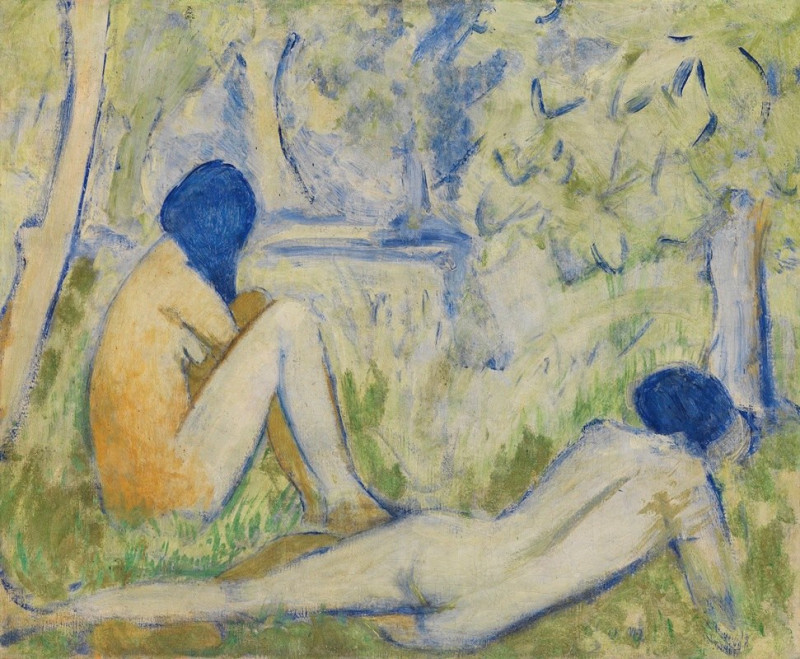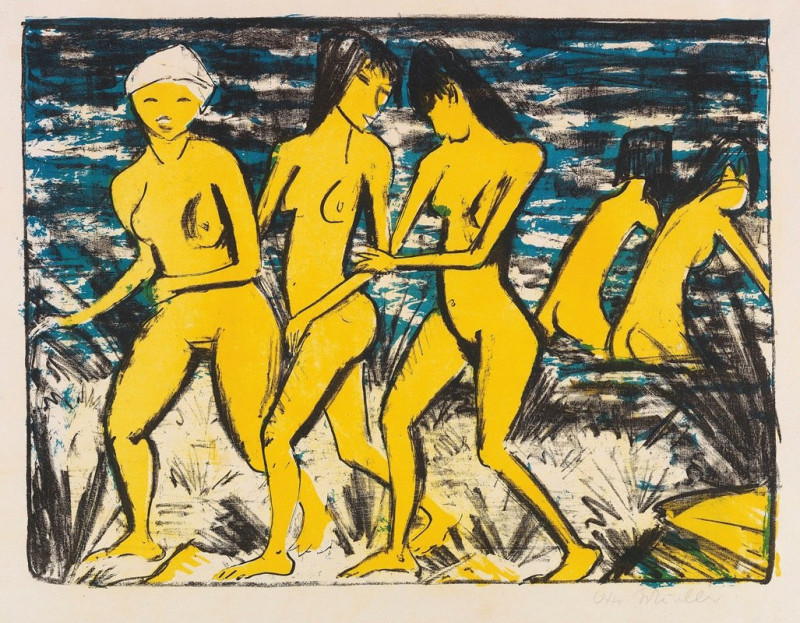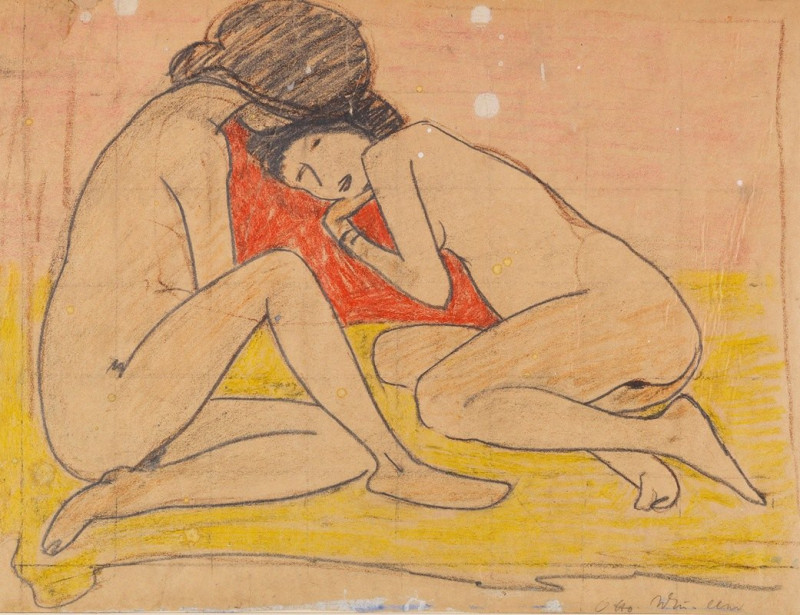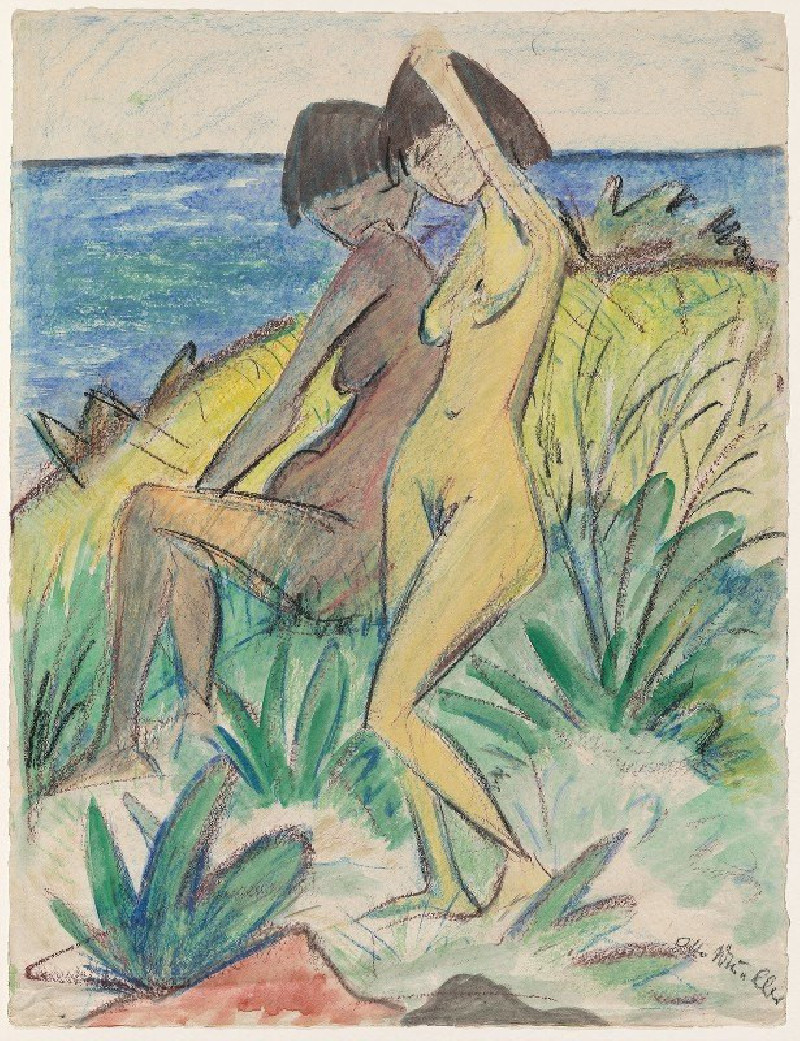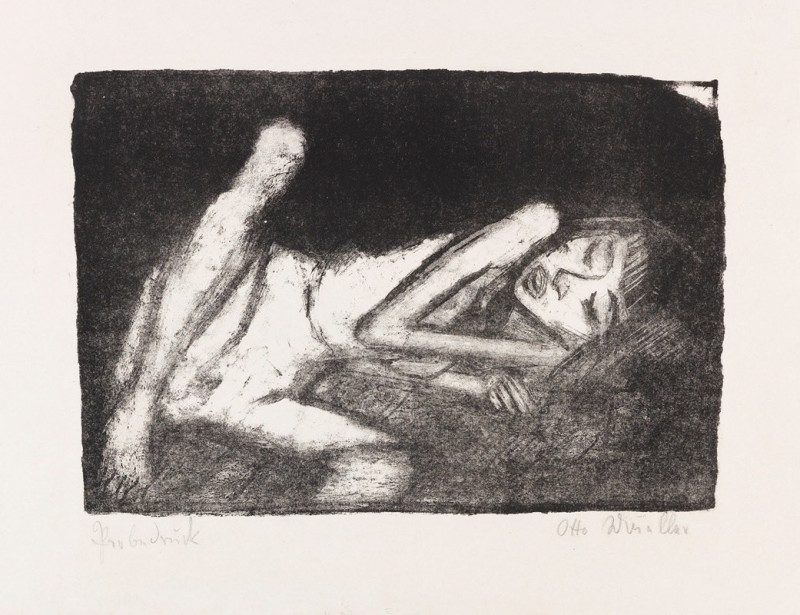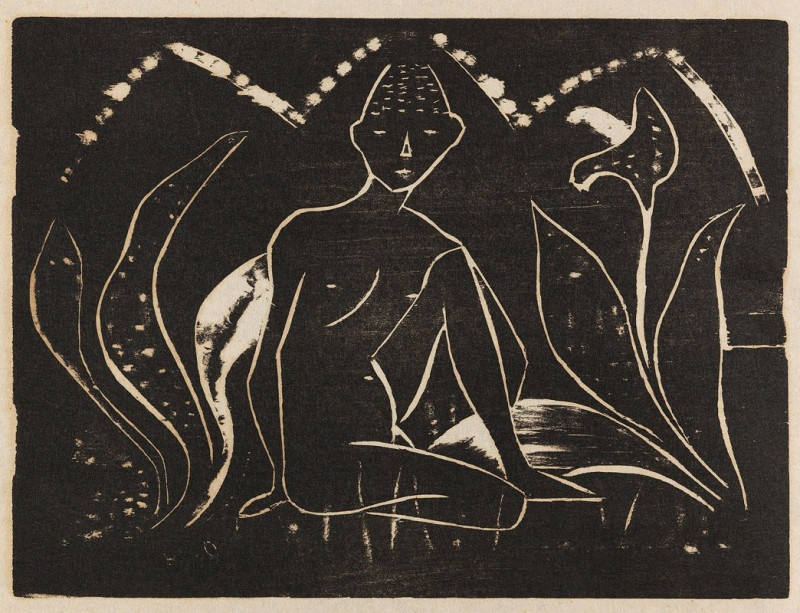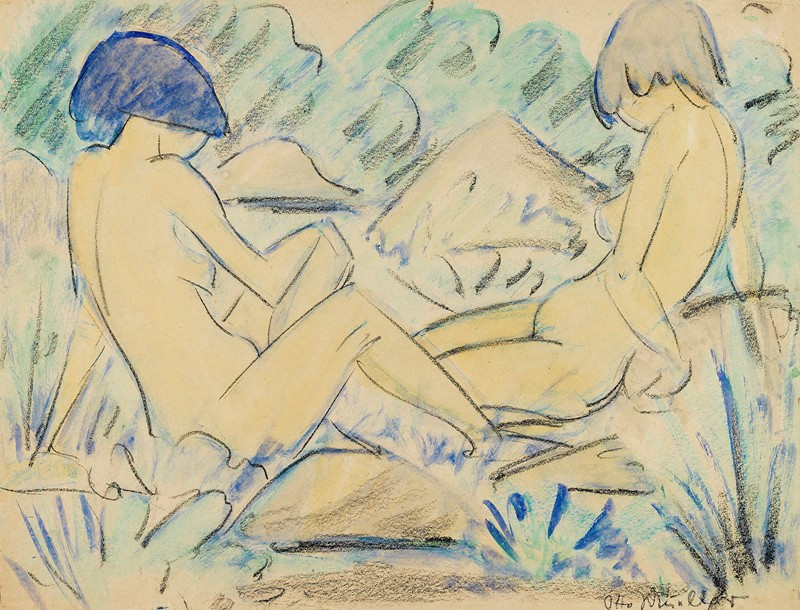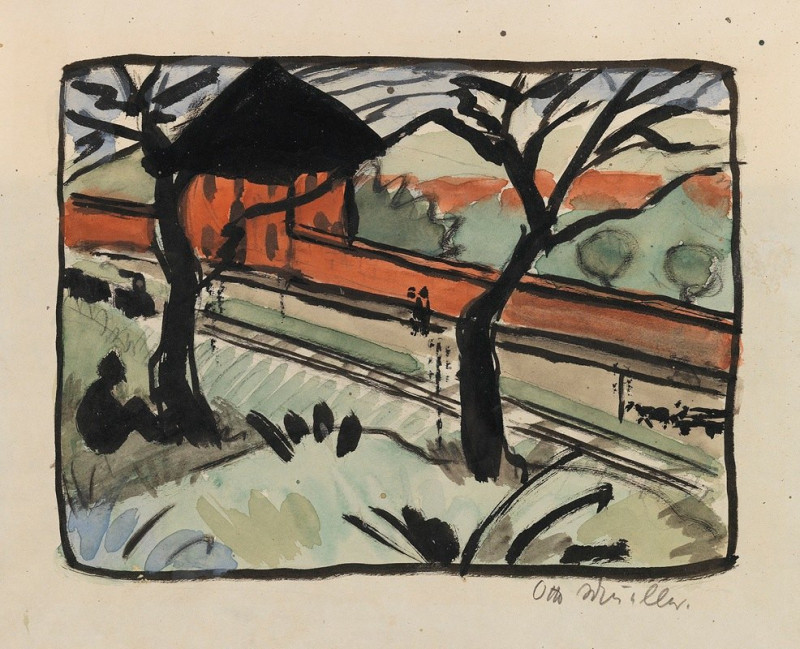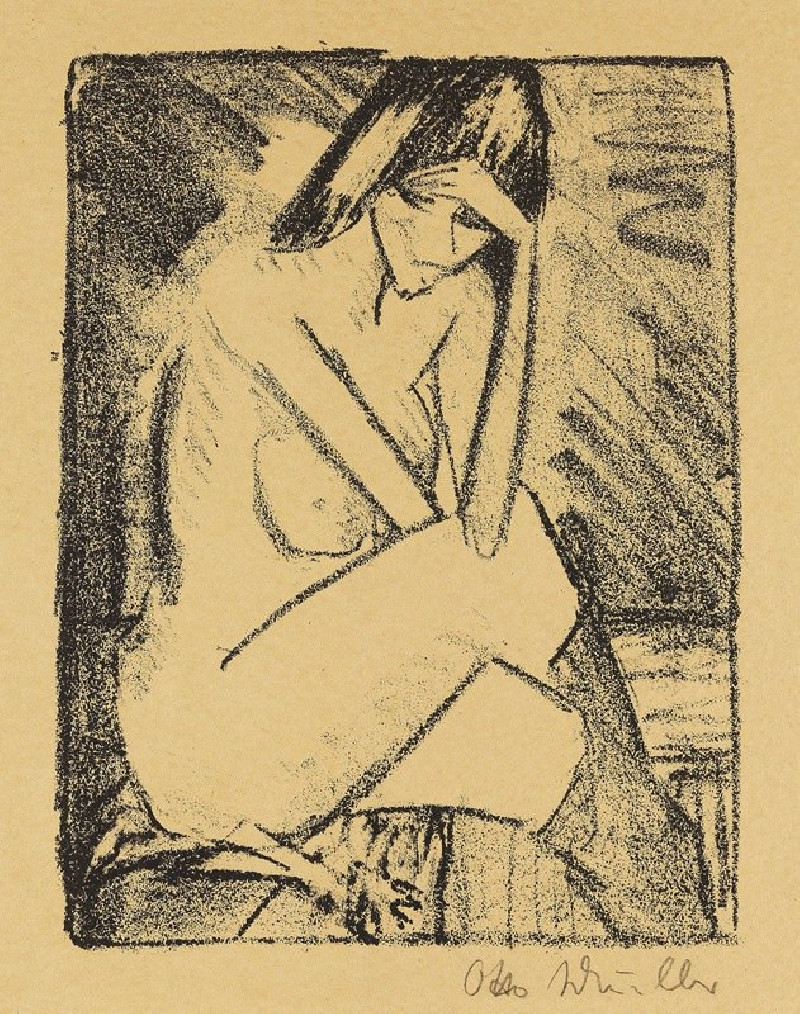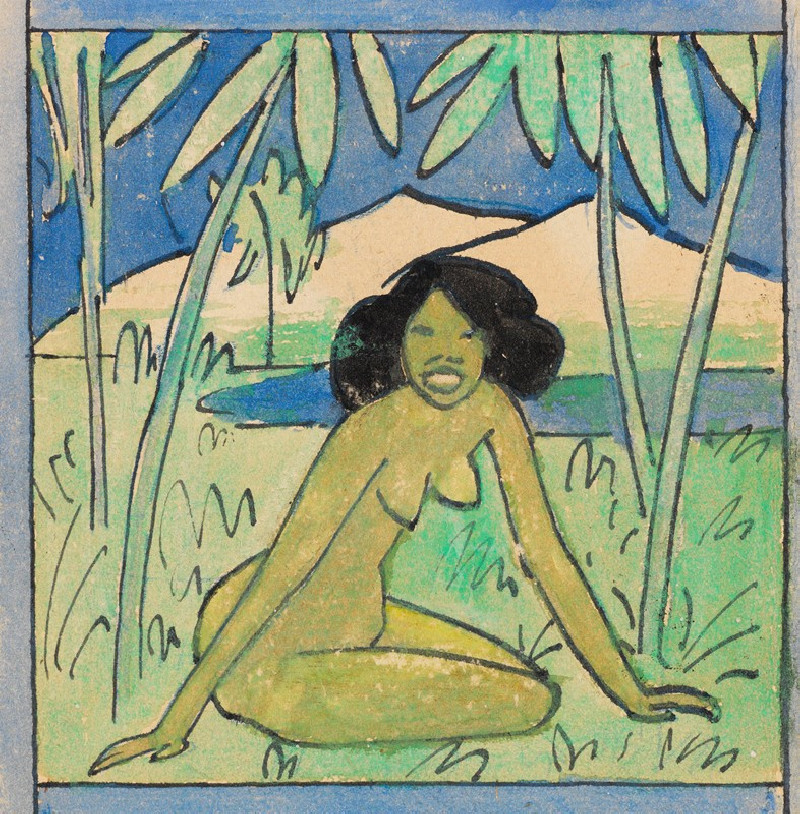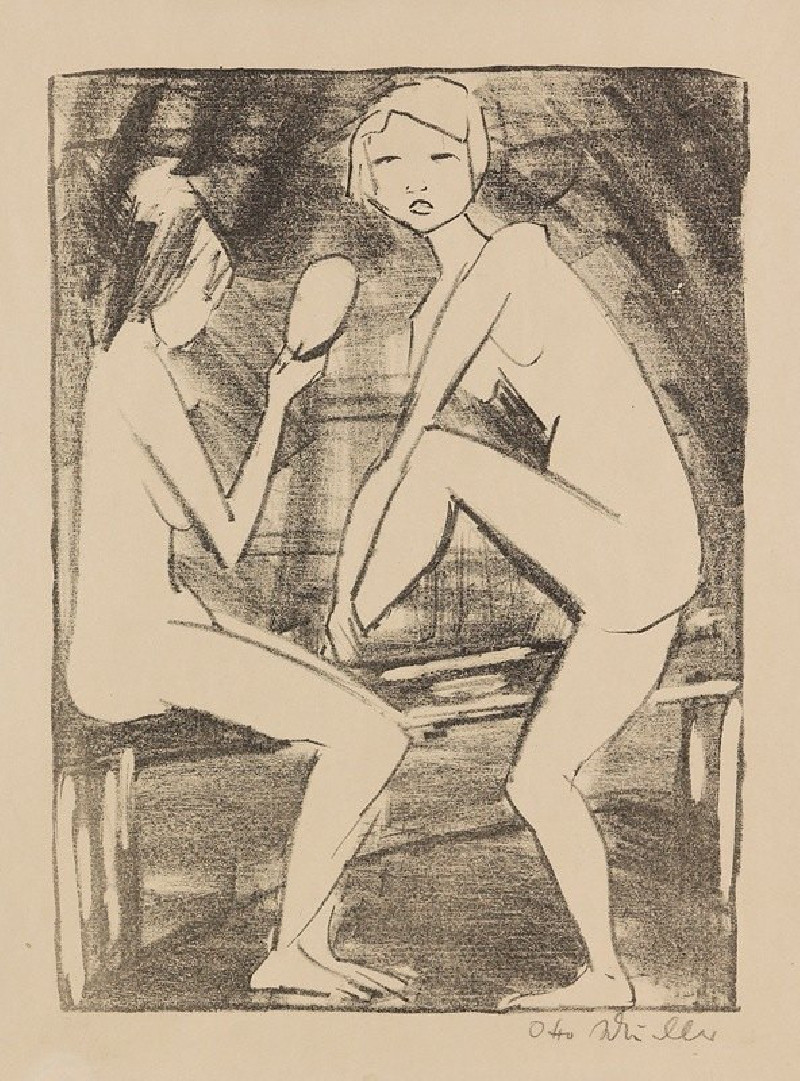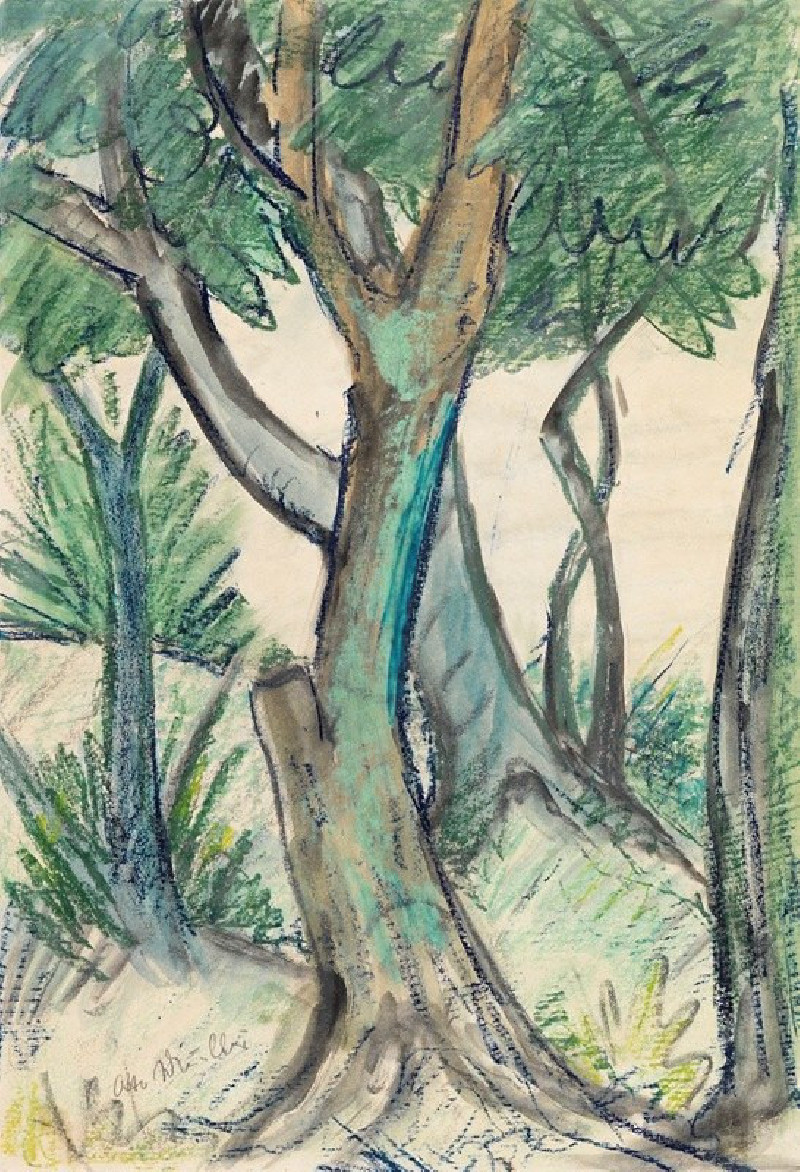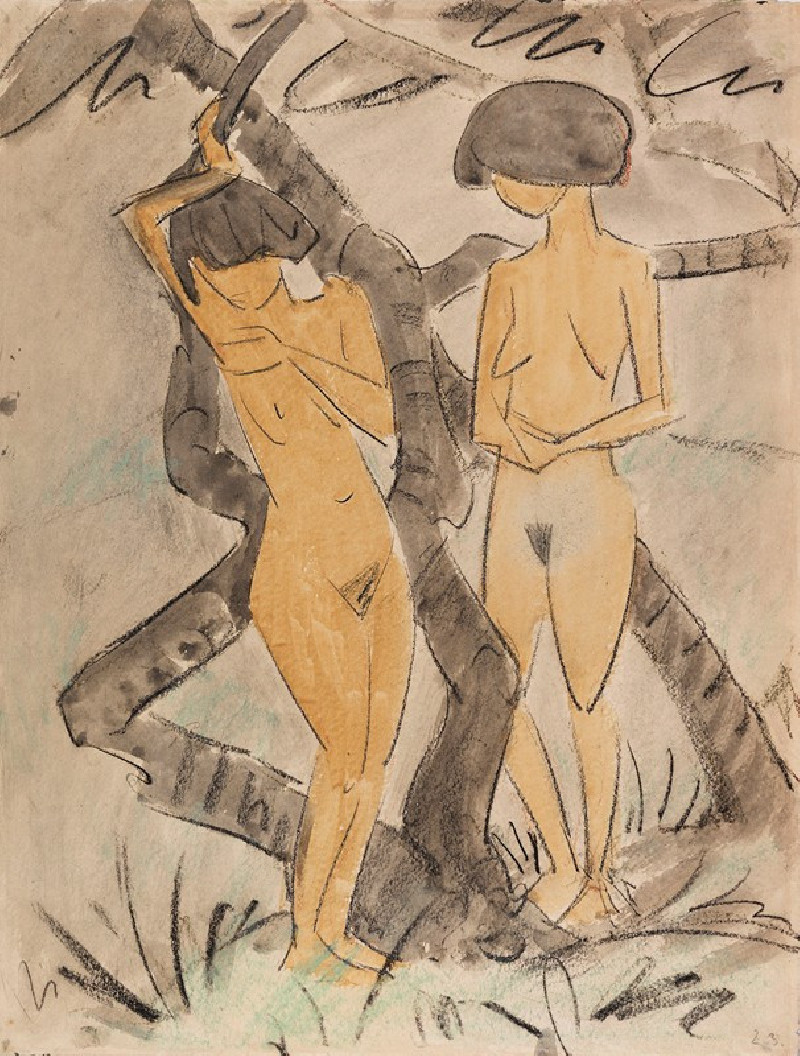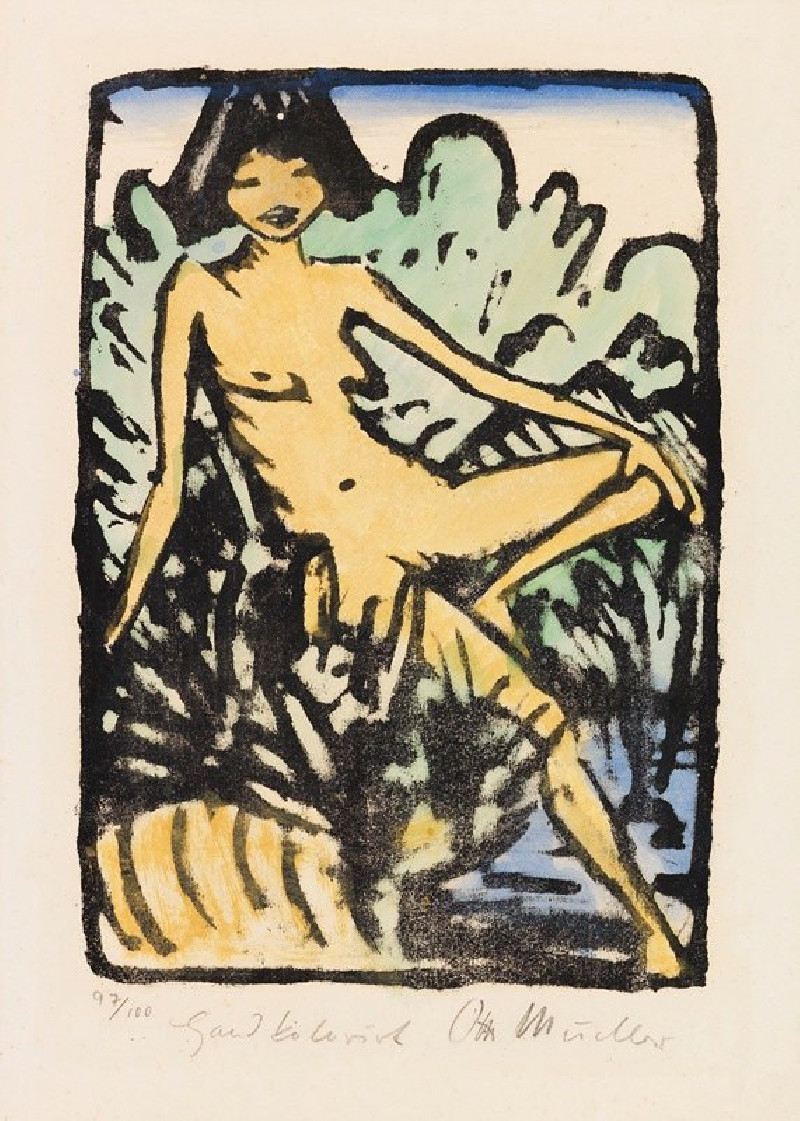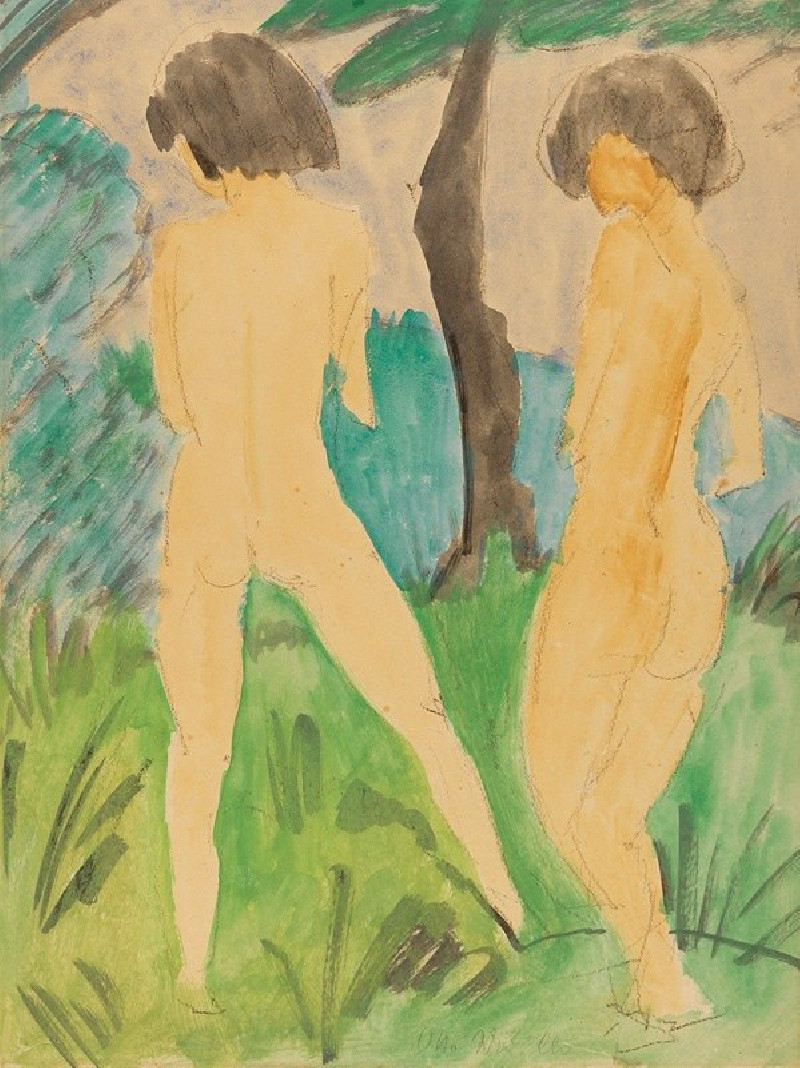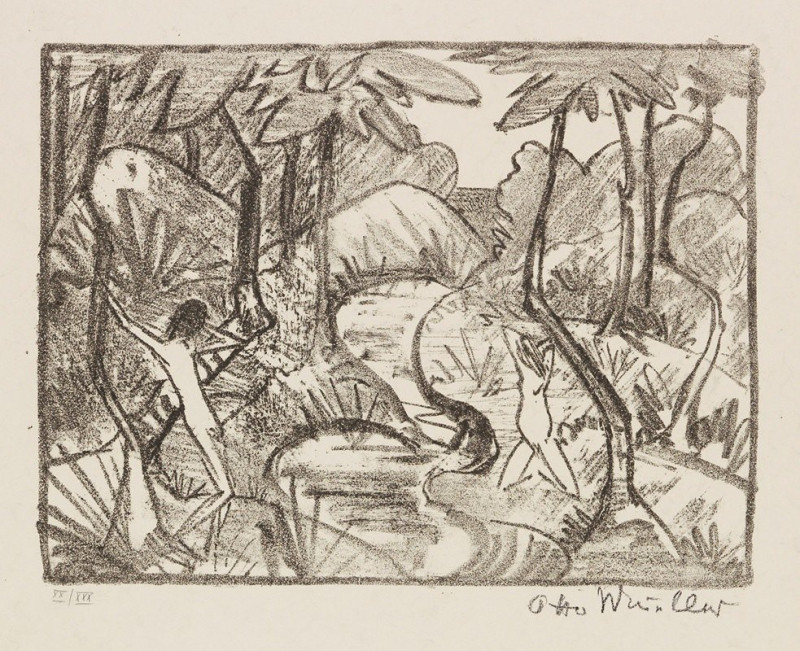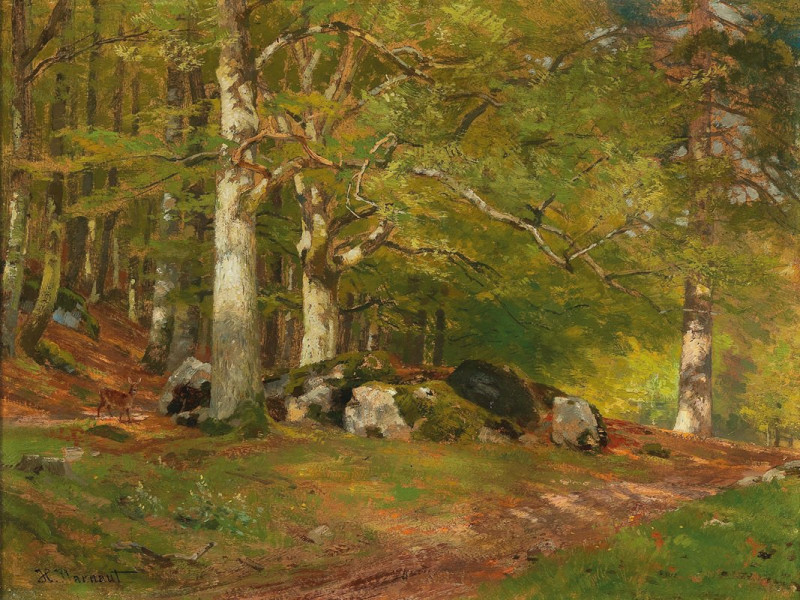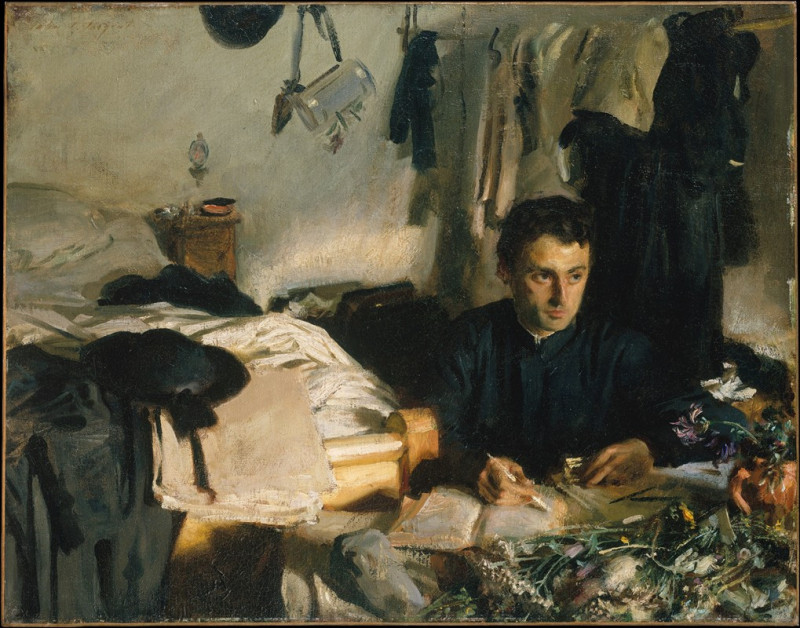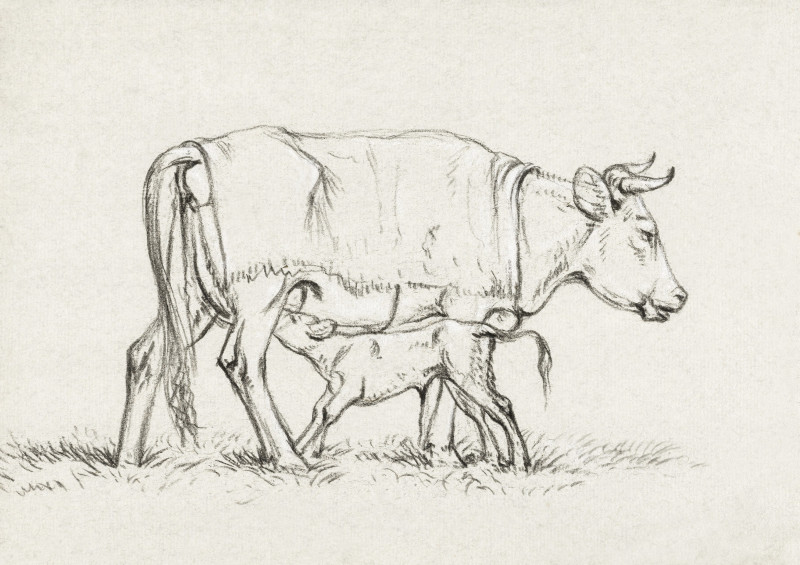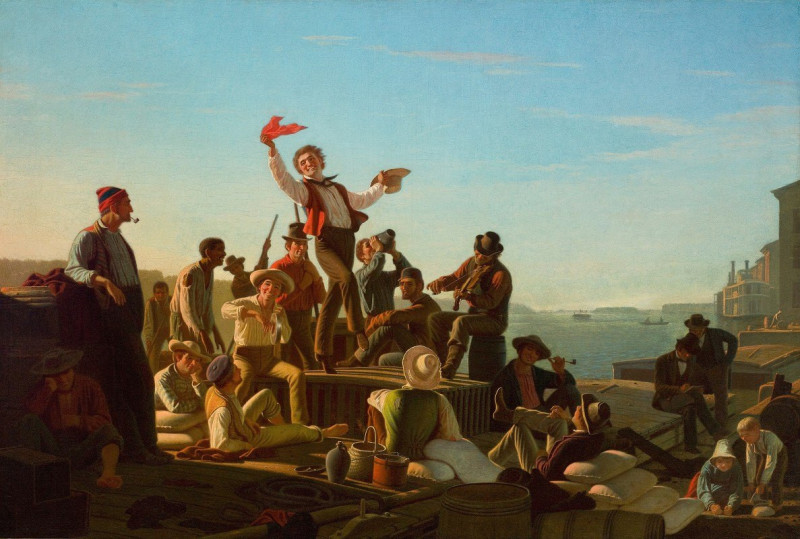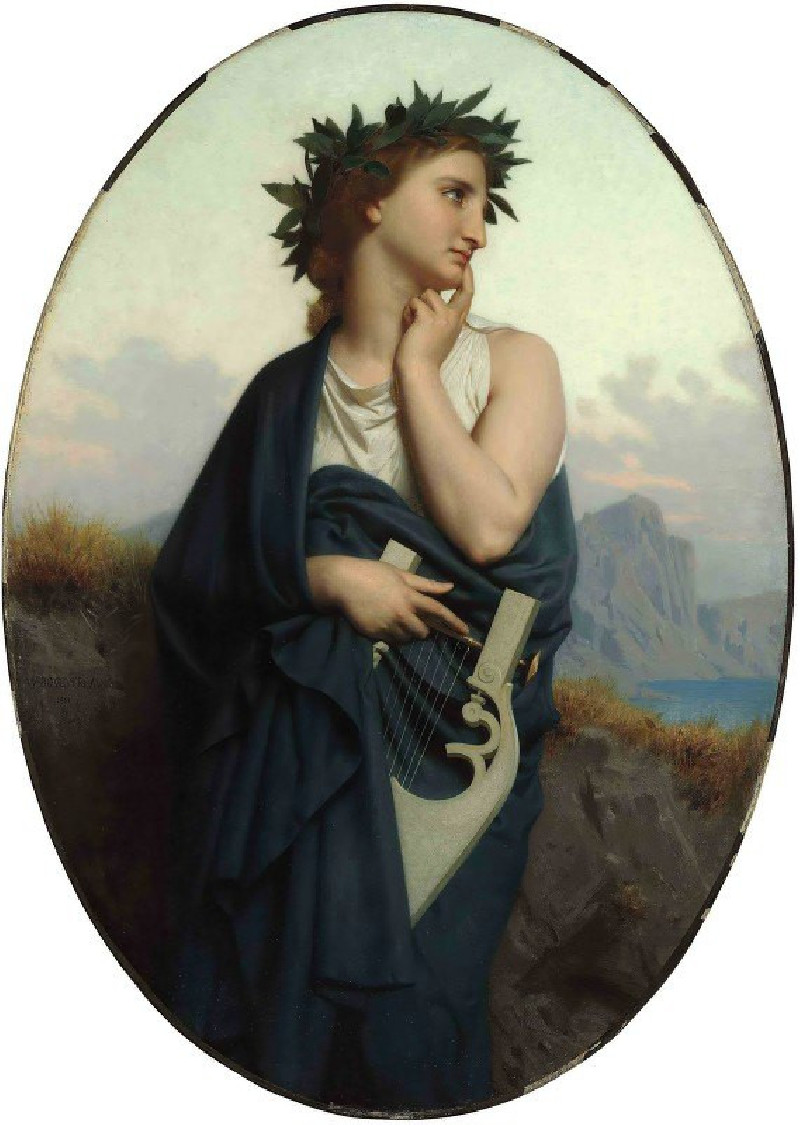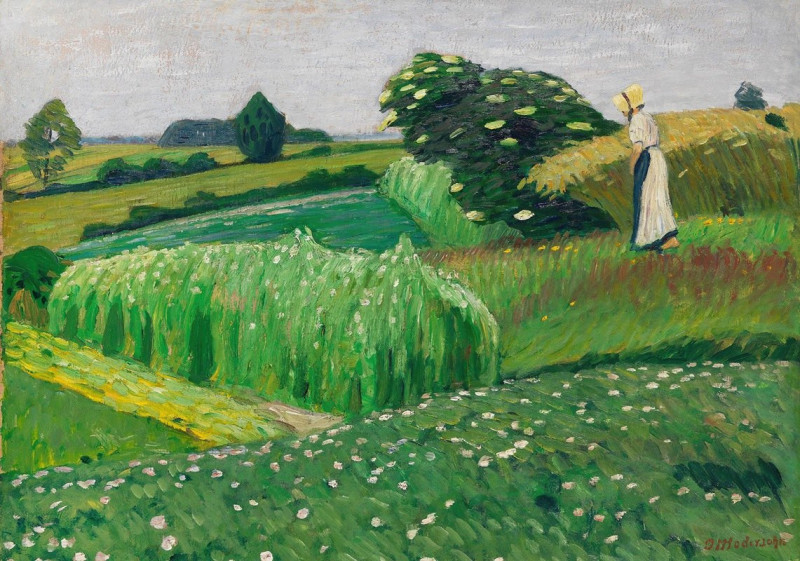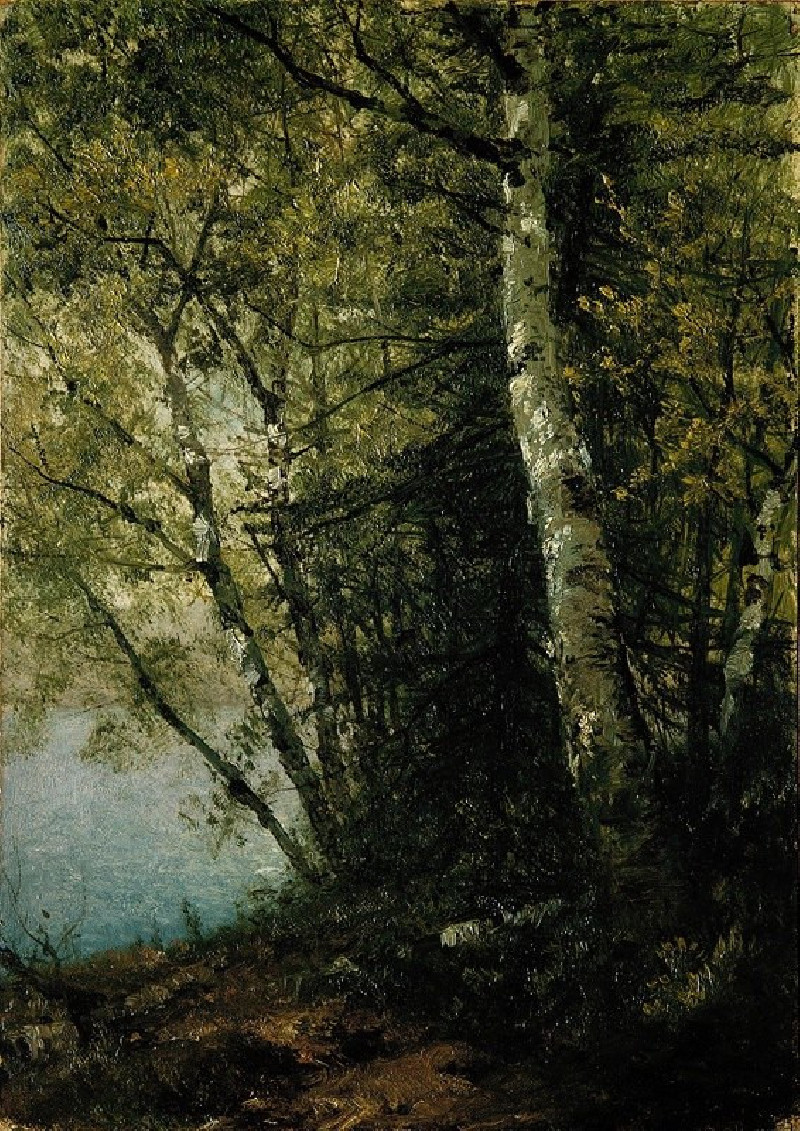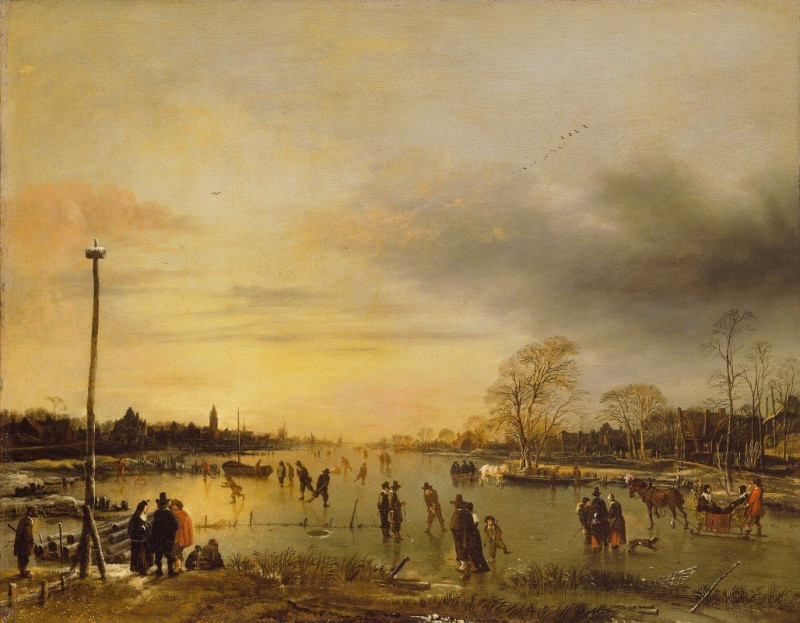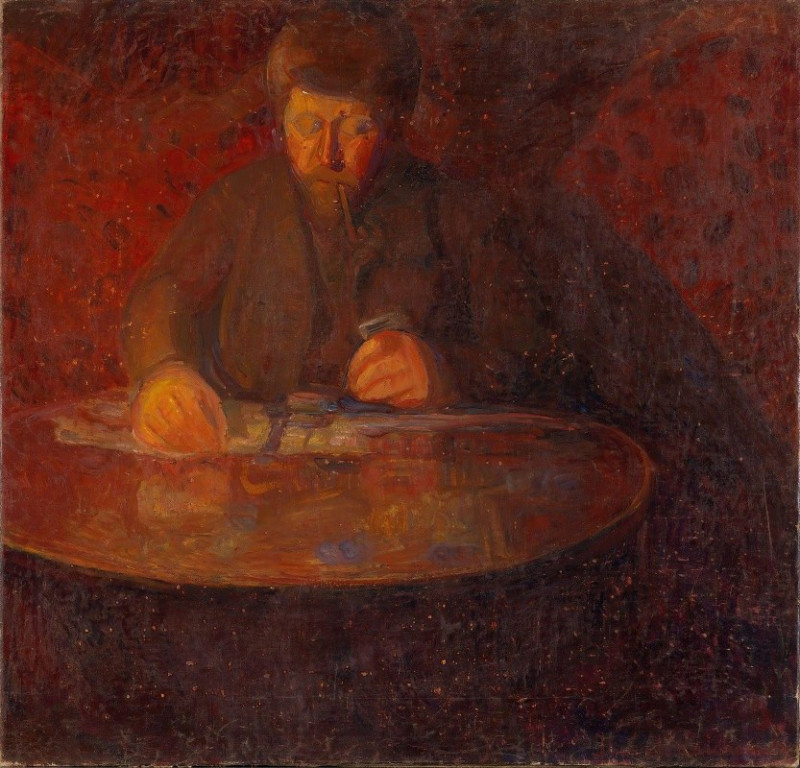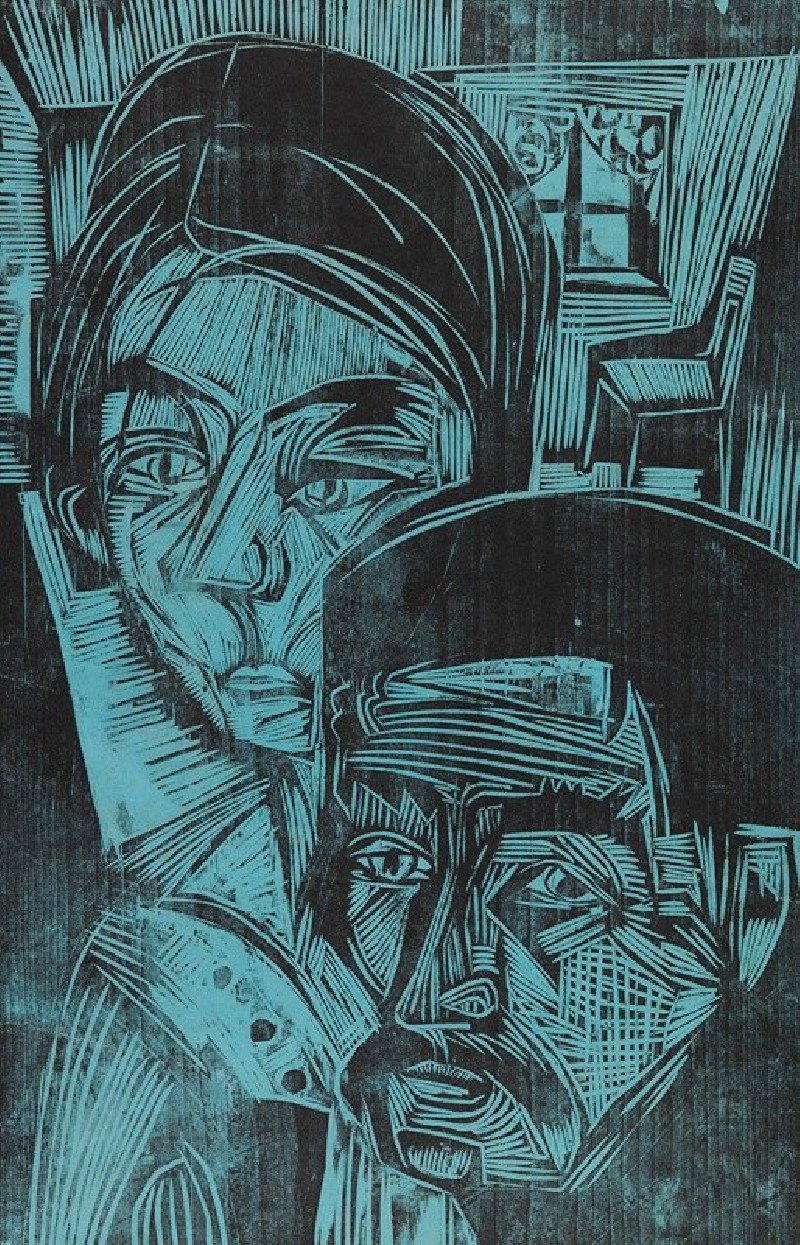Zigeunermadonna (Zigeunerin mit Kind vorm Wagenrad) (1936)
Technique: Giclée quality print
Recommended by our customers
More about this artwork
"Zigeunermadonna" (also known as "Zigeunerin mit Kind vorm Wagenrad") is a compelling artwork by Otto Mueller, created in 1936. This painting portrays the intimate and poignant image of a Romani woman with her child, set against the faint, almost spectral presence of a wagon wheel—an enduring symbol frequently associated with the nomadic lifestyle of the Romani people.Mueller's use of dark, earthy tones juxtaposed with the somber green background evokes a feeling of depth and emotional complexity. The figures are rendered with expressive, simplified lines that emphasize their presence and the emotional bond between mother and child. The woman's penetrating gaze and the serene expression of the child contribute to the painting's powerful emotional impact.This piece is a striking example of Mueller's expressionistic style, defined by its textured surfaces and the dramatic interplay of light and shadow. "Zigeunermadonna" not only captures the essence of human relationships but also reflects a deep empathy towards the Romani culture, which Mueller often celebrated in his artwork.
Delivery
Returns
Otto Müller was a German painter and printmaker of the Die Brücke expressionist movement.
Mueller was born in Liebau (now Lubawka, Kamienna Góra County), Kreis Landeshut, Silesia. Between 1890 and 1892 he was trained in lithography in Görlitz and Breslau. From 1894 to 1896 he studied at the Academy of Fine Arts in Dresden and continued his study in Munich during 1898. He left Munich's academy after Franz von Stuck classified him as untalented.





